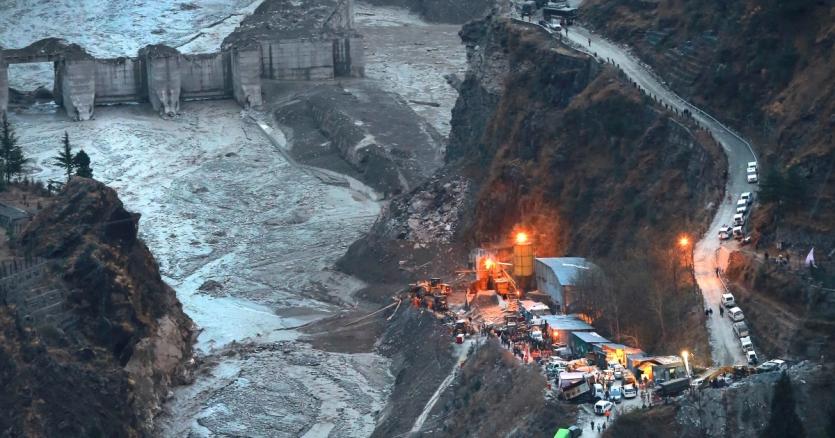A aerial view of Tapovan barrage on Tuesday, February 9, 2021, two days after a portion of the Nanda Devi glacier snapped off, in India's northern state of Uttarakhand. Photo:AP
By Patryk Krych | The World Daily | FEBRUARY 10th 2021
According to experts, warnings had been given to the Indian government all the way back in 2014 about the dangers of receding glaciers propelled by climate change and the effects that they would have – and now the worst has come to past.
Ravi Chopra, the director of the non-profit body People’s Science Institute, along with several other experts had been tasked with the study of effects of climate change on the disappearing glaciers in the Himalayan mountains in India, and how they would in turn affect the nearby dams of the valleys in the long run. What they had found and reported to the government over 6 years ago was that there was indeed a danger – and yet, disaster was still allowed to occur.
“They were clearly warned, and yet they went ahead,” said Chopra, in regards to the landslide flood that had come down from the Himalayan mountains and crashed against a nearby dam, destroying plenty of homes and taking many lives in its path.
At the moment, 31 deaths had been confirmed, alongside reports of at least 165 people still thought to be missing. Rescue operations have commenced, and are still well underway in the Chamoli district of northern Uttarakhand state, but progress isn’t easy-going by any standard. The trail of destruction in the path of the flood was captured on video, and gives only a fragment of incite into just how chaotic the situation was and still is.
According to experts, the icy Himalayan mountains are melting at twice the rate at which they were 20 years ago, back in 2000. This is a dangerous situation, as the lives of many people are heavily dependant on the balanced ecosystem typically present in the Himalayan mountains. Such disasters as the one that had occurred at the hydroelectric dam in Uttarakhand may become more commonplace if this issue goes on forgotten.
“The brute force of these things just kind of just really mind-blowing,” said Joerg Michael Schaefer, a climate scientist specialising in ice and Himalayan glaciers at Columbia University who added that the threat is present in more than just avalanches – but in gradually expanding lakes and other terrible effects of global warming. “You cannot tame that tiger. You have to prevent that.”
He said that the energy gathered through the dams present in such areas as Uttarakhand is enough to rival “several nuclear bombs,” but that setting up such power production facilities without putting some added thought as to what lies upstream is a dangerous game.






